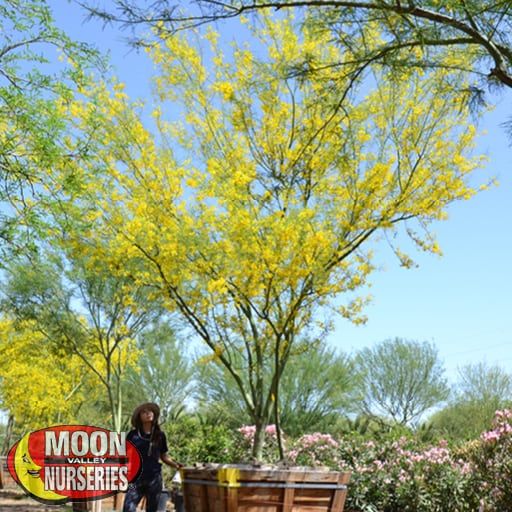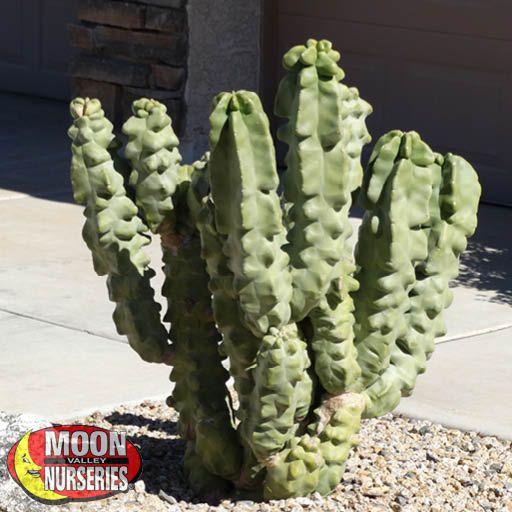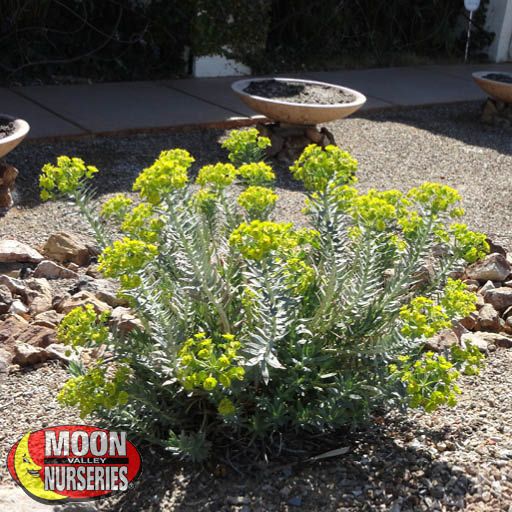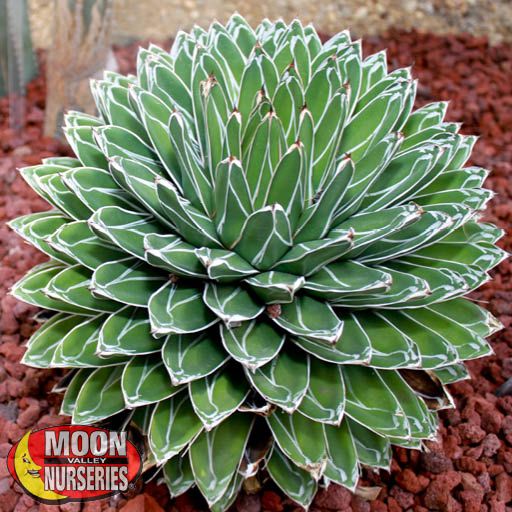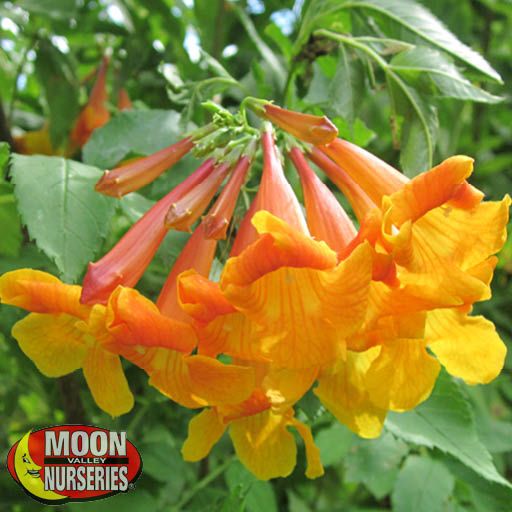For the best trees on earth, go straight to the Moon!

Southwest Landscape for Nevada
Imagine sitting in the warm sun poolside enjoying the gorgeous southwest views. Add these plants to your yard to make a gorgeous southwest landscape.
Trees
Mesquite
This is the thornless Chilean Mesquite tree, Prosopis chilensis, and this heat-loving, drought tolerant tree is a beautiful addition to any waterwise landscape or planted next to pathways or patios! Native to South America, this is the classic desert tree with a wide canopy of soft, bright green, fern-like foliage covering dark, twisting branches, for a look that brings visual interest to any landscape. We have these hybrid Chilean Mesquite trees for sale in single or multi-trunk and at sizes that can provide light filtered shade. Plant a few of them together as groves and feel free to relax on your porch even when it's bright and sunny outside!
Palo Verde
The Museum Palo Verde is actually a hybrid of different, older Palo Verde species that brings the best qualities of each. This results in a fuller, vibrant yellow flower display with brighter green, thornless trunks, which is why the Museum Palo Verde is fast becoming one of the most popular shade trees in landscapes throughout the Western United States. The multi-trunked, sculptural shapes of these trees provide a stark contrast and beautiful accent to almost any landscape.
Fruitless Olive
Homeowners are sure to appreciate its easy to care for attributes. Fruitless Olive trees crave full sun and are able to tolerate poor, stony, shallow soils so you can plant this tree on a variety of landscape styles. With very little water requirements once established, this resilient medium-sized tree can grow with a widespread, making this a great tree for use as a canopy tree for shade or as a silhouette against structures, bringing shade to sun-facing room.
Vitex
Vitex, botanical name Vitex agnus-castus, also known as the Chaste Tree, offers a gorgeous display of handsome gray-green foliage and terminal clusters of fragrant lilac blooms. Native from the Mediterranean region to central Asia, this fast growing small to medium sized tree will enhance any landscape with beauty and is sure to attract hummingbirds and swarms of butterflies. This is an excellent choice for a beautiful garden or for use as a patio tree.
Desert Willow
Desert Willow, botanical name Chilopsis linearis, is a small to medium-size tree that blends well with any landscape style and gets bonus points for being able to cast light shade! These Southwest natives feature willow-like, long and narrow leaves and they typically grow along desert washes, hence the name. They are fast becoming a favorite small tree in landscapes both for their size and for their fragrant, trumpet-shaped blossoms that fill the air from spring to fall. The Penstemon flowers vary in color and range from pink to lavender, adding a beautiful contrast with the airy green foliage! Hummingbirds love the Desert Willow, especially in the summer, and if you're looking for a smaller tree that thrives in hot, arid climates, you'll love this Chilopsis linearis too!
Plants
Golden Barrel
The Golden Barrel Cactus is one of our most sought after and popular varieties of cacti. Named for its unmistakable shape and bright golden tint, the Golden Barrel Cactus grows very slowly, allowing landscapers to ensure the perfectly round shape stays that way. Each 'ridge' of the cacti is covered in straight, lightly-colored thorns that create a screen of coverage providing this cactus with its golden tint. As an added spectacle of desert beauty, Golden Barrel Cactus produce a cluster of yellow flowers from the top of the plant, producing a yellow fruit when ripe. Plant Golden Barrel Cactus in rows, planters, or corners of landscapes to add a uniquely Arizonan touch to your yard.
Mexican Fence Post
The Mexican Fence Post is one of the most attractive and cleanest looking cacti available. The tall stems branch out from the cactus base to form a fence-like cluster of tall, cylindrical 'posts', usually with 5 or 6 pronounced ridges. Along these ridges run symmetrical rows of small white thorns that make the Mexican Fence Post look striped from a distance. The Mexican Fence Post also produces a wonderful pink to light-red flower that adds great seasonal color to your landscape. Because it is native to the sub-tropical areas of Mexico, the Mexican Fence Post requires more irrigation, usually weekly, during our hot summers to perform its best.
Prickly Pear
Prickly Pear Cactus is the original looking cacti cluster that people commonly associate with the term cactus. Native to many different desert parts in the Southwest, there's no better way than to achieve that Arizona desert look for your landscape then adding some Prickly Pear Cacti. They produce large yellow blooms which form the classic cactus fruit that's purple when ripe. Prickly pear are light green but can get a shade of purple when the weather is cooler. Naturally suited to our environment and moderately fast growers, Prickly Pear Cactus doesn't require much watering or care after they're established. Prickly Pear Cactus are the safe bet to plant when you want that classic Arizona feel to any landscape.
Ocotillo
The Ocotillo is a highly unique desert plant that derives its shape from several green-leafed stems that emerge from a common base, giving it a distinctly different look in any landscape. The Ocotillo is used in landscape design as both a focal point and an accent plant. The most admired quality of the Ocotillo is its red spike-shaped flowers atop the stalks of the plants that are very showy in summer months after rainfall.
Totem Pole
Totem Pole Cactus are named for their multiple tall and cylindrical stalks that have a bumpy surface, sometimes resembling other patterns in nature. The thornless stalks are smooth to the touch and grow in a tight cluster around the base of the original plant. Found in the southern parts of Mexico and areas of South America, Totem Pole Cactus are highly resistant to heat, and resistant to all but the harshest winters, so they're suitable for growing in Arizona. They do require more periodic irrigation then what other cacti require, but the brilliant green stalks the Totem Pole Cactus add to your landscape are well worth it.
Sticks of Fire
We love to plant Sticks on Fire where there is plenty of full sun exposure and where anyone can enjoy the display of changing colors! They look fantastic in rock gardens and make a great addition to beds and borders. They really are versatile and able to handle a variety of conditions, in fact, they're salt tolerant, and so they are suitable for seaside gardens. Of course, desert areas will appreciate their coral-like appearance all year long too! We also love to plant them in succulent gardens, where these water-wise plants can add curb appeal without having to use too much water!
Gopher Plant
Gopher Plant also called Silver Spurge is an upright growing small shrub that is a beautiful tint of blue-green that blooms a bright yellow bloom in late winter to early spring. These succulent Euphorbia species have tight spirals of thick leaves that go up the stems of the plant almost creating arm like outreaches that spread in the planting area. These are a very water-wise and fire-wise plant choice and grow well in full sun to partial shade. Gopher Plant is also extremely hardy, handling hot full day sun to freezing temperatures in the winter.
Century Plant
The largest of the Agave species, the Agave Americana, commonly called the Century Plant, grows long, pointed blue-green leaves appearing to stem straight from the ground. The Century Plant grows at a fast rate (comparative to other cacti) establishing thick leaves in a heavy 'pup' cluster that can reach out up to 3 feet from the base. Native to Texas, the Century Plant thrives in full or partial sun locations, and absolutely loves the hot Arizona weather, but is also cold hardy enough to survive our coldest winters. An agave with an acutely recognizable structure, Century Plants look great in any Arizona or desert landscape application.
Blue Glow Agave
Blue Glow Agave may very well be a perfect agave for any size landscape. Its compact form and smooth, blue-green leaves edged in burgundy form a single, beautifully symmetrical rosette, making them a perfect waterwise choice for beds and borders, rock gardens, succulent gardens, and any spot in coastal, suburban, rural, or city landscapes. This is one succulent that can transform your landscape into a spectacular, low-water design that adds curb appeal while reducing water use too. We love to use them as a dramatic focal point or accent!
Queen Victoria Agave
Smaller then most Agave species, Queen Victoria grow in a uniformly rounded pattern out to about 3 feet. These Cacti have a great look to them, and grow so evenly spaced and perfectly round that you'd swear each leaf was placed by hand. Plant Queen Victoria Agave in clusters or rows to get the most out of this effect. Since the Queen Victoria Agave is relatively small, you can achieve the maximum effect with very little available room in your landscape. Being an Agave, Queen Victoria are naturally tolerant to drought, but perform best when irrigated occasionally. Plant Queen Victoria Agave in the full sun or partial shade for best results.

Yucca Rostrata
Drought tolerant plants can be beautiful, just look at the evergreen Yucca Rostrata. With its slender, blue-gray leaves, showy creamy white flowers in the summer, and low maintenance features, Yucca Rostrata or ""Blue Yucca"" is an ideal tree-like yucca plant perfect for use as a focal point in your Southwestern landscape or garden architecture. People looking for a fast-growing, drought-resistant plant with stunning features will find much to love about this Yucca Rostrata.
Red Yucca
Red Yucca is an excellent accent plant for dessert and transition areas. Attractive clumps of long grey leaves with a fringe of white hairs down the sides make the Hesperaloe parvifolia a truly beautiful desert plant. Vibrant flower spikes rise high above the plant from the spring through the fall. Red Yucca requires very low maintenance and are tolerant of a wide range of soil and water conditions. Remove dead flower stalks as they form seed heads to encourage new bloom spikes. Red Yucca is very cold tolerant making it perfect for accenting landscapes away from the protection of buildings and trees.
Sage
Rose colored flowers carpet this hardy shrub creating a beautiful change in just about any landscape. The Green Cloud Sage is very heat tolerant and can be planted in full sun with no worries of sunburn. The ideal time to prune is in late Winter in order to maintain fullness or trim as needed to create beautiful geometric shapes like balls and squares. Not a fussy plant, Green Cloud can be grown in desert and tropical yards.
Cassia
Feathery Cassia is a fast growing, large, desert shrub with soft, delicate looking silver foliage. It is best used along borders or in the background of most landscapes where they can best show-off their huge floral display in early spring. Trim hard immediately after blooming to control size and easily remove seed pods. Water deeply and allow the soil to dry out well between watering once they are established.
Salvia
Autumn Sage is a very pretty perennial small accent shrub with beautiful red to coral flowers during the warm months of spring and fall. In well-drained soil, they respond very well to fertilizer to help them stay healthy looking in the hot months of summer.
Plant where they can receive some protection from the hottest sun in summertime.
Red Mexican Bird of Paradise
The Red Mexican Bird of Paradise is a medium to large growing shrub with bright orange/red flowers that show from late spring through the fall. Often seen in desert landscapes, semi-tropical yards and open commercial areas this shrub is one of the brightest flowering plants for any use in the Valley. Prune hard in winter to maintain medium to large scale. Unpruned specimens can grow to 10 ft or so. They are very drought tolerant and love the heat.
Tecoma
Orange Jubilee is noted for the fast growing, reaching branch structure with bright orange flowers. They can reach 10 to 12 ft high with long leggy branches. Trim occasionally to keep them full and well behaved. Plant Orange Jubilee where they will receive at least half a day of sun and soil with good drainage would be best even though they are tolerant of heavy soil if they can dry out. Mostly deciduous in normal winters, a hard freeze will damage their branches. Not to worry, they will recover very quickly in spring with warmer weather.
Cape Honeysuckle
It’s most often used as an informal hedge with a burst of bright orange trumpet-shaped flowers that regularly start blooming in the fall months. It can also be used as a small shrub to add accents of bright colors into your design. It can be pruned into any shape or size, as desired. With a trellis or support ties, this plant can also be used as a vine to cover bare fences or create more privacy. Regardless of how you grow it and where you put, the Cape Honeysuckle will have no problem catching the eye of every passerby.
What is next?
From consultations and design concept to completion, our talented team can help create the backyard of your dreams. We design beautiful and peaceful tropical oasis’s that can be enjoyed year round. Let us help bring your vision to life
Product
Customer Service
- Copyright © Moon Valley Nurseries. All Rights Reserved.
- Privacy Policy
- Terms of Use
- Site Map




